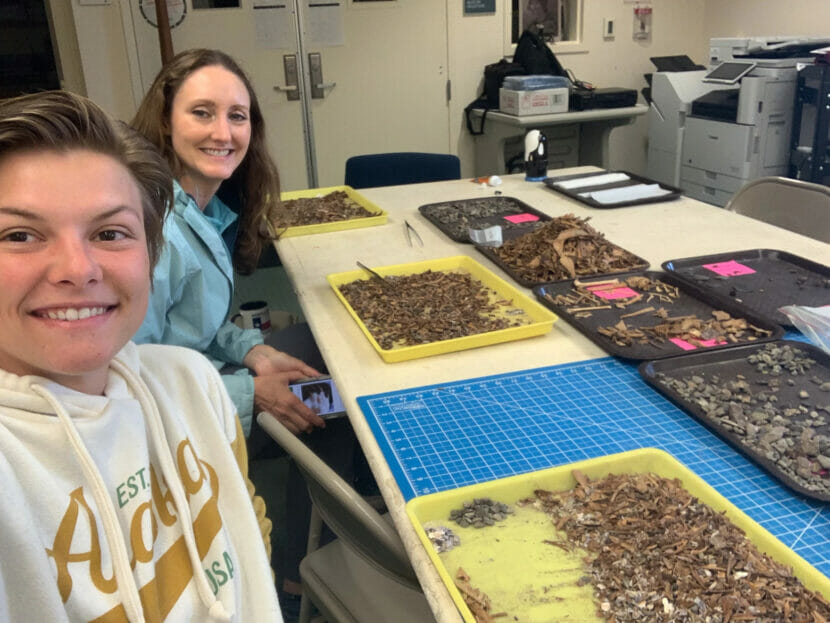
Archaeologists found brown and polar bear bones – some over 5,000 years old – at two dig sites on Unalaska and Amaknak Islands in the Aleutians during the early 2000s. Since then, the bones have puzzled scientists. There are no bears on either island today and no historical records of bears ever living there.
Lilly Parker and Kaylee Tatum, researchers from the University of Oklahoma, spent two weeks in Unalaska this summer. They shared their research findings with the community and asked for any information about bears that was passed down through generations. Tatum said Unangax knowledge could help explain how the bones got there.
“Anything is helpful,” Tatum said. “Whether it’s a story that you heard around the campfire as a kid and you barely remember it … I still care. I still want to hear that.”

According to carbon dating, the polar bear bones are about 5,500 years old and the brown bear bones are about 3,000 to 5,500 years old.
Parker said the bones were found at two different midden sites, which are historical dump sites used by Unangax people thousands of years ago.
“They were just kind of in a jumble, in a mix of other remains,” Parker said. “There were around 23,000 animal bones found at the sites.”
Parker and Tatum spoke to many Unangax elders about the mystery of the bear bones during their two-week stay in Unalaska.
While the elders were largely unsure of how the bones got there, one story suggested that people thousands of years ago may have transported bear meat by sea from the neighboring island of Unimak, which has a population of bears. Oral tradition has been passed down that says locals may have eaten bear when other food was scarce, such as during a particularly long and cold winter.
Parker and Tatum are planning to return to Unalaska next year to present follow-up scientific data. They will look for genetic clues, including a link between the bear bones found on Unalaska and Amaknak Islands and the bears on Unimak.
If they find a connection, it could solve the mystery of how the bear bones ended up on islands where bears were not previously known to live.




